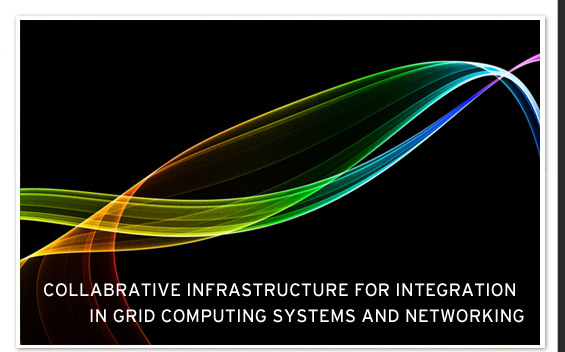UltraLight (NSF ITR Award #0427110 – Harvey Newman Principal Investgator) is a collaboration of experimental physicists and network engineers whose purpose is to provide the network advances required to enable petabyte-scale analysis of globally distributed data. Current Grid-based infrastructures provide massive computing and storage resources, but are currently limited by their treatment of the network as an external, passive, and largely unmanaged resource. The goals of UltraLight are to:
- Develop and deploy prototype global services, which broaden existing Grid computing systems by promoting the network as an actively managed component.
- Integrate and test UltraLight in Grid-based physics production and analysis systems currently under development in ATLAS and CMS.
- Engineer and operate a trans- and intercontinental optical network testbed, including high-speed data caches and computing clusters, with U.S. nodes in California, Illinois, Florida, Michigan and Massachusetts, and overseas nodes in Europe, Asia and South America.
Winner of the 2007 Internet2 IDEA award, and 2008 CENIC innovations award
See http://ultralight.caltech.edu for more information.
PLaNets is the Physics Lambda-based Network System.
The ambitious PLaNets project (NSF Award # 0622423 , Harvey Newman Principal Investigator) is developing the following:
- An End-Host Agent evolved from the present MonALISA LISA-agent
- Path Discovery and Building Services, using the developments of OSCARS in ESnet, Terapaths at Michigan and BNL, and LambdaStation at Fermilab, with long-range hybrid path building done by MonALISA/VINCI. The emerging standard VCAT channel-building facility within the CIENA Core Directors at the US LHCNet PoPs will be used to allocate and limit bandwidth assigned to grid tasks, across the Atlantic.
- Basic MonALISA/VINCI + FDT robust functionality, including the already-demonstrated ability to respond to a fiber cut and rebuild the network path without interrupting the FDT streaming of files, will be moved from the prototype phase to production use.
- Network Request Services. Within the reduced budget we will implement simplified services to allow grid jobs to request network resources, interfaced to the MonALISA/VINCI path provisioning service.
- Authentication, Authorization and Accounting Services: these will be adopted from CMS, ATLAS and OSG as needed.
Integration with grid services: The network services will be interfaced to the major data flow/workflow applications such as CMS’ PhEDEx and the LCG/OSG Storage Element. This aspect of the work will depend on manpower leveraged from other projects in which the PLaNetS software development team is involved.
The result of this work will be a first implementation of a new generation of intelligent distributed storage and network systems running among the Tier1 and Tier2 sites throughout the US, and across the Atlantic to CERN and other Tier1 and Tier2 sites in Europe. This mode of provisioning and hybrid circuit- and packet-network operation also is the direction being adopted by the major research and education networks including the Energy Sciences network, Internet2 and National Lambda Rail in the US, and the GEANT pan-European network. We will also extend these services across the Atlantic using NSF’s IRNC links, to Latin America using the CHEPREO/WHREN-LILA link and to Korea over GLORIAD by the end of the first year of the project. |

















